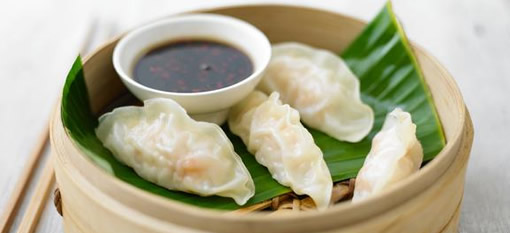Planning on going to the Cape to Canton Chinese New Year event on Sunday at the Vineyard Hotel and Spa? Here’s a bit of background on some of the Chinese cuisine you can expect on the day.
FIRST, A QUICK HISTORY LESSON.
Nowadays, the term “dim sum” (in written Chinese, and pronounced dian xin in Mandarin) is a meal—usually taken on a weekend morning—that encompasses a vast roster of small dishes selected from carts.
In the beginning, dim sum was a verb that merely meant “to eat a little something.” Cantonese dim sum culture began in tearooms in the latter half of the nineteenth century in the city of Guangzou, possibly because of the recent ban of opium dens. It spread and gained popularity—especially in nearby Hong Kong.
The sort of dim sum restaurant we’re familiar with today in the West originated in Hong Kong in the mid-1950s. These Hong Kong parlors had areas for banquets and even mah-jongg games, and carts pushed by “aunties” (a’sam).
HOW TO USE THE DIM SUM FIELD GUIDE
Regular patrons of North American dim sum restaurants will find most, if not all, of the selections pictured here familiar. Newcomers should find the illustrations—which have been grouped by their method of preparation and general type—helpful in identifying some of the more typical offerings. This arrangement will provide even first-time visitors to dim sum restaurants with access to field identification in a clear and rational array.
more on buzzfeed.com



